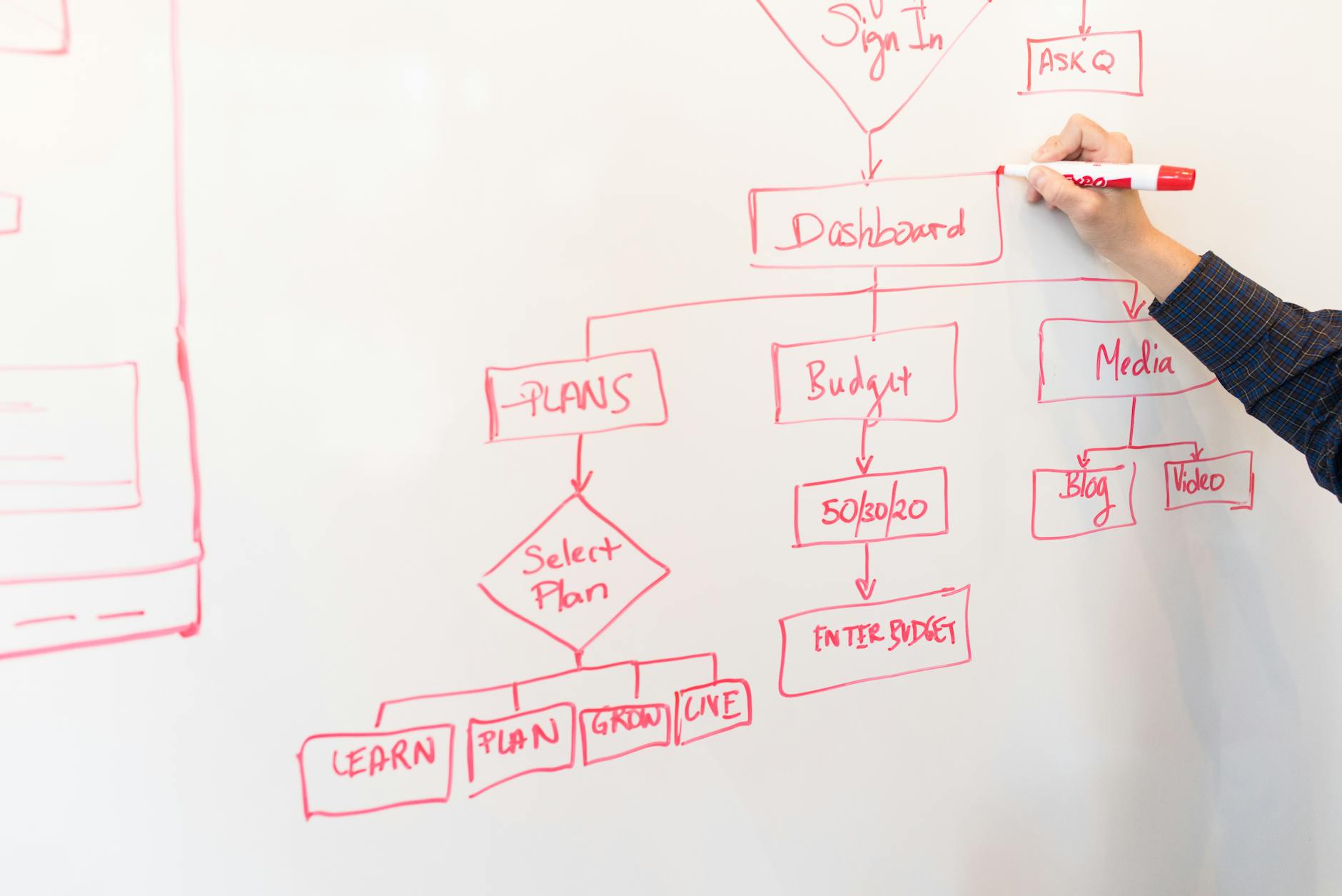The start in project management often feels like walking into a high-stakes, fast-moving scene where every decision echoes across the entire team. Most new project managers face surprises they didn’t anticipate and pitfalls they never saw coming. Early mistakes are more common than you’d think, and they can shake your confidence.
The truth is, no one comes in fully prepared. Each misstep sends a message—sometimes loud, sometimes subtle—about what needs tightening or shifting. Instead of setbacks, these moments become learning points, shaping better leaders and sharper decision-makers. Growing into a strong project manager means accepting you’ll make mistakes, but knowing how to fix them is what counts.
Underestimating Stakeholder Communication
When new project managers take the helm, it’s easy to focus on hitting deadlines and checking boxes. What often falls through the cracks is the flow of communication with stakeholders—the people who care about the project’s outcome. Like forgetting to water a plant, missing steady communication can leave stakeholders in the dark and anxious, even if progress is humming along.
A single missed update can set off a ripple of worry or bring out questions that slow everything down. When assumptions pile up, so do misunderstandings. Steady, clear communication prevents chaos, builds trust, and keeps every part of the project linked together.
Missing Regular Updates and Touchpoints
 Photo by Ninthgrid
Photo by Ninthgrid
Stakeholders don’t need hourly play-by-plays, but they do expect honest updates that shed light on progress and roadblocks. Skipping check-ins can turn small surprises into last-minute fires. It’s like trying to run a relay race but never handing the baton—nobody knows what’s coming next.
Good project managers keep everyone in sync with:
- Consistent status emails or reports tailored to the audience (not too much, not too little).
- Set meeting rhythms: Weekly, biweekly, or monthly, based on project speed and complexity.
- Clear meeting agendas to respect people’s time and stay focused.
- Open channels for feedback so stakeholders can voice questions or spot issues early.
Use the same rhythm as you would for any team routine. Scheduled updates create space for open conversation and stop problems from festering unseen. For complex projects, especially ones blending different methodologies, adopting a consistent update system is key—consider how hybrid project management methods (how hybrid project management works) rely on disciplined check-ins to bridge gaps between teams.
Failing to Track and Manage Stakeholder Needs
Stakeholders are not a faceless crowd. Each has unique worries, power, and ways of working. If you lump them together or forget to check in on their real priorities, small issues can snowball fast.
Project managers sometimes fail to:
- Map out who the core stakeholders are and what matters most to them.
- Revisit and adjust plans as stakeholder goals shift.
- Track changes in roles, expectations, or company goals.
- Respond to silent concerns—the ones not spoken but certainly felt.
Building a simple stakeholder map or list early helps you spot needs before they become roadblocks. Keep your finger on the pulse through regular feedback sessions or short check-ins—even a two-minute chat can surface problems that, left alone, might stall your project.
How to Build Lasting Stakeholder Trust
Trust isn’t something you can rush. It’s built through steady actions and transparency. Stakeholders remember silence or “spin” more than a tough update delivered honestly.
A few ways to earn and keep their trust:
- Be transparent about setbacks. Address slips or changes quickly. People trust clarity over vague reassurances.
- Follow through on promises. If you say you’ll send an update by Friday, do it.
- Listen more than you talk. Take time to really hear what’s being said—and what’s not.
- Document decisions and share them in writing. This reduces confusion and keeps memories sharp.
When stakeholders know you’ll keep them in the loop—win or lose—they’re more likely to back your project even when things get rough. Managing these relationships with care is what transforms a group of worried onlookers into strong project allies.
Poor Risk Management Habits
Every new project manager has been caught off guard by an unexpected issue at some point. Perhaps it’s a budget hiccup halfway through, a team member leaving without warning, or a sudden change from a key stakeholder. When the pressure is on, weak risk management habits can turn a simple problem into a full-blown mess. Learning to spot the traps early can keep your project from spiraling off course.
 Photo by Monstera Production
Photo by Monstera Production
Let’s break down the most common risk missteps—and how to swap panic for confidence.
Ignoring Risks Until They Happen
Many new managers focus on meeting milestones and pushing tasks forward, while unseen risks lurk in the shadows. Most teams only talk about what’s in front of them, skipping conversations about what could go wrong. When a risk finally surfaces, it feels like a sudden storm, leaving everyone scrambling.
A few ways this bad habit sneaks in:
- Avoiding tough conversations about “what if” moments, often to keep morale high.
- Assuming small risks aren’t worth tracking, only to watch them grow.
- Feeling like “risk management” is something to worry about later, when things get real.
Ignoring risks doesn’t make them go away. It just means they show up at the worst possible time—when there’s little room to maneuver.
Skipping the Contingency Plan
Some new project managers think contingency plans are optional, especially if the project starts off smoothly. In reality, skipping this step is like driving with no spare tire. It’s easy to be optimistic in the planning phase, but when something fails and there’s no Plan B, a minor setback can grind everything to a halt.
Common reasons why PMs avoid contingency planning:
- Belief that the current plan “should be enough” if everyone does their job.
- Not knowing where to start, so it feels overwhelming.
- Worrying that talking about risks will stress out the team or stakeholders.
No one wants to imagine failure, but a good contingency plan feels like insurance: you hope not to use it, but you’re glad it’s there when you need it.
Practical Approaches to Proactive Risk Management
Even simple steps can dramatically upgrade your risk game. You don’t need a ten-page template or a risk consultant—just habits that stick and tools that are easy to use.
Some practical tactics include:
- Starting a risk log in a plain spreadsheet. Track each risk, the likelihood, potential impact, and who owns it. Update every week.
- Assigning clear risk owners. Make sure someone is watching each significant risk, not just “the team.”
- Setting a rhythm for risk reviews in every project meeting, even if just for five minutes.
- Working risks into your stakeholder updates, so everyone sees the bigger picture, not just what’s going right.
- Offering space for team members to quietly flag concerns—some people will spot trouble before it arrives but might hesitate to speak up in a big group.
- Revisiting both old and new risks when project changes occur, like new tech, shifting deadlines, or changes in scope.
With a bit of structure, you’ll catch problems while they’re still small. This makes you the project’s calm in the storm—someone who’s ready, steady, and hard to surprise.
For more on balancing preparation with flexibility, check out strategies in hybrid project management approaches, which show how expert PMs blend planning and adaptability for better outcomes.
Micromanagement and Lack of Delegation
New project managers often feel responsible for every detail, like flipping every switch and turning every knob themselves. This habit, while coming from a place of wanting to help the project succeed, can actually slow progress and build stress. Teams get tangled when only one person is trusted to make decisions or solve problems. The desire to control everything not only wears down the project manager, but also leaves the team discouraged and disengaged.
The Trap of Doing It All Yourself
Taking charge can feel safe, especially when you’re new. But carrying the whole project on your back soon becomes a burden too heavy to bear. When project managers don’t let go of the small stuff, time crawls, burnout builds, and missed details begin to snowball.
Teams sense when their work is being second-guessed. Double-checking every task sends a message: “I don’t fully trust your judgment.” People pull back, waiting for instructions instead of stepping up. Momentum breaks down, creativity dries up, and the team’s best ideas never make it to the table.
When the pressure mounts, consider this:
- Micromanaging slows decisions. Important choices need to move fast, not sit in someone’s inbox.
- Team members check out. When their opinions and skills aren’t trusted, many retreat and do the minimum.
- Personal stress spikes. Handling every decision alone leaves you tired, distracted, and more prone to mistakes.
Letting go feels risky at first, but it opens the door for the team to share in the wins and the problem-solving.
Building Team Ownership and Accountability
Great project managers build teams where everyone feels responsible for outcomes, not just assigned tasks. This shift begins when you create space for team members to contribute, take risks, and own pieces of the project.
 Photo by Yan Krukau
Photo by Yan Krukau
Clear roles help everyone know what’s expected. When each team member has a defined purpose, it’s easier to hold each other accountable and celebrate progress together.
Try these steps to spark real ownership:
- Set clear, measurable goals for every team member and tie them to the project’s success.
- Encourage open discussion by asking for opinions before giving answers.
- Recognize wins both big and small to make accountability feel rewarding, not punishing.
- Give feedback quickly and directly, so improvements and learning happen in real time.
Teams that feel trusted go further. When people know their contributions matter, they speak up, take initiative, and help catch problems early. You’ll find more energy in meetings and fewer things slipping through the cracks.
For more on building trust with your team and stakeholders, consider the lessons on maintaining steady communication and clear expectations found earlier in this article.
Effective Delegation in Practice
Delegation is more than handing off work. It’s about matching the right tasks to the right people and setting them up for success. Many new project managers say they delegate, but in practice, they hover too closely or snatch work back at the first hint of trouble.
To delegate well:
- Identify strengths and interests. Assign tasks that fit each team member’s skills or stretch them in useful ways.
- Be specific about outcomes. Share what success looks like, but give the team room to choose their own paths.
- Check in without hovering. Schedule regular updates, but avoid constant interruptions.
- Offer resources and support. Make sure your team has what they need before stepping back.
- Accept that mistakes will happen. Use errors as teaching moments, not blame.
When teams are trusted with real responsibility, projects not only move faster—people learn, grow, and become more invested in the end result. Delegation isn’t just about dividing the work. It’s about multiplying the impact the team can have together.
Losing Sight of Project Scope and Priorities
Project plans may look clear on Day 1, but somewhere between endless emails and surprise meetings, focus can slip away. New project managers often start with sharp goals, only to get pulled in all directions by shifting demands. It’s common to look up weeks later and find your team hopping from task to task without a clear end in sight. Overloading the team or missing deadlines isn’t always the result of poor effort—often, it’s because scope and priorities got lost in the shuffle.
Let’s break down the warning signs and simple fixes to help keep your project flying straight.
Letting Scope Creep Take Over
 Photo by Christina Morillo
Photo by Christina Morillo
Scope creep sounds small but grows fast. It starts with a stakeholder suggesting “just one more feature.” The team agrees, thinking it’s a minor change. Then another tweak comes, followed by a request or two from someone else. Soon, a project that was focused and manageable now sprawls with extra features and shifting deadlines.
Every new addition seems harmless in the moment. But like adding one too many ingredients to a recipe, the end result can turn messy. Jobs pile up, budgets stretch thin, and deadlines slip out of reach.
Sometimes, new project managers say yes to every new idea, worried about disappointing others. Teams quickly feel the pressure, as sprint after sprint fills with last-minute tasks that weren’t in the plan. Scope creep isn’t just an inconvenience—it’s a fast way to end up with an exhausted team and a project that never feels “done.”
Recognizing scope creep often means noticing subtle patterns:
- Frequent “small” change requests stacking up.
- Features delivered late, or never quite finished.
- Early excitement giving way to confusion and frustration.
Struggling to Say ‘No’ to New Requests
Many new PMs want to say yes. They want to be seen as helpful, flexible, and eager to please. But always agreeing is a quick path to confusion. Every new request pulls attention from what matters most. Suddenly, the roadmap looks more like a patchwork quilt than a clear path forward.
Here’s what can happen when “no” gets left out of your toolkit:
- Teams lose sight of priorities as tasks and features stack up.
- Project goals drift, making it hard to measure true progress.
- Expectations balloon, and it feels impossible to keep everyone happy.
Saying “yes” to everything is like letting passengers steer the ship—they all mean well, but you’ll never reach your destination. Building the strength to push back is part of being a respected PM. It doesn’t mean being stubborn or ignoring good ideas. It means acting as the project’s guardrail, filtering what belongs and what must wait.
A few ways to protect priorities without burning bridges:
- Thank people for their ideas and explain your focus on existing goals.
- Let the backlog act as a holding space for future ideas—review often, but don’t action everything now.
- Be transparent about the impact of adding new work: “If we do this, something else will slip. Which should we trade?”
- Use your project charter or goal statement as your compass when hard choices come up.
For more detailed strategies on mapping stakeholder needs and discussions, check the PM Playbook Blog, which explores real-world situations and tested communication approaches.
Simple Tools to Keep Projects on Track
When the project feels off course, a few steady routines can pull things back in line. You don’t need fancy software—just habits the team can stick with, week after week.
Popular practices include:
- Backlog review meetings: Regularly scan the list of requests and prioritize what really matters now. Archive or mark low-priority requests, so the team isn’t distracted by “someday” tasks.
- Clear goal boards: Use digital tools or simple whiteboards to keep the current goals front and center.
- Weekly standups: Short check-ins to share what’s in progress, blockers, and how current work connects to the big picture.
- Priority matrices: Quick exercises to map tasks by urgency and importance. Move low-impact requests to the side.
Some PMs also rely on habit-building routines:
- At the start of each week, ask: “Is every task in our queue tied back to the core project goal?”
- End each meeting with: “What’s our top focus this week? What can wait?”
- Schedule a quick monthly review with stakeholders: revisit the goals, compare progress, and agree on any changes together—with reasons.
Small habits like these make it harder for distractions to sneak in. By keeping purpose visible and priorities sharp, your project has a fighting chance of finishing well—on time, within scope, and without losing team morale.
Conclusion
Mistakes don’t define you as a project manager—they shape you. Each one is a signpost pointing toward growth, not just a stumble. When you treat these early setbacks as lessons, you get stronger, more resourceful, and better at steering your team through tough moments. Real progress comes from honest self-reflection and the courage to put better habits into practice.
The most successful project managers are always learning, open to feedback, and not afraid to adjust their style. If you keep applying these fixes—steady communication, tracking risks, smart delegation, and clear priorities—you’ll soon see the impact in smoother projects and stronger teams. Thanks for reading—share your experience with a fellow PM and keep moving forward.

Leave a Reply